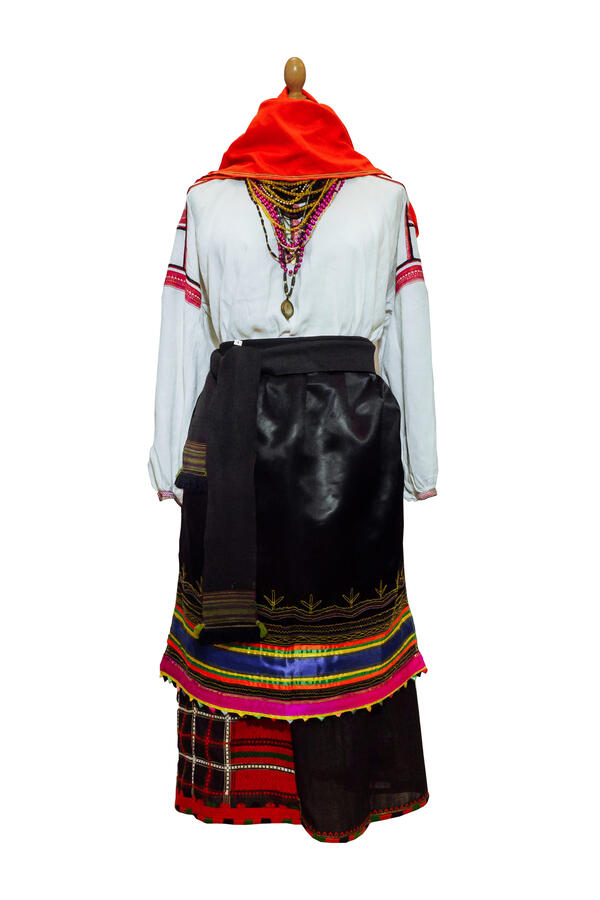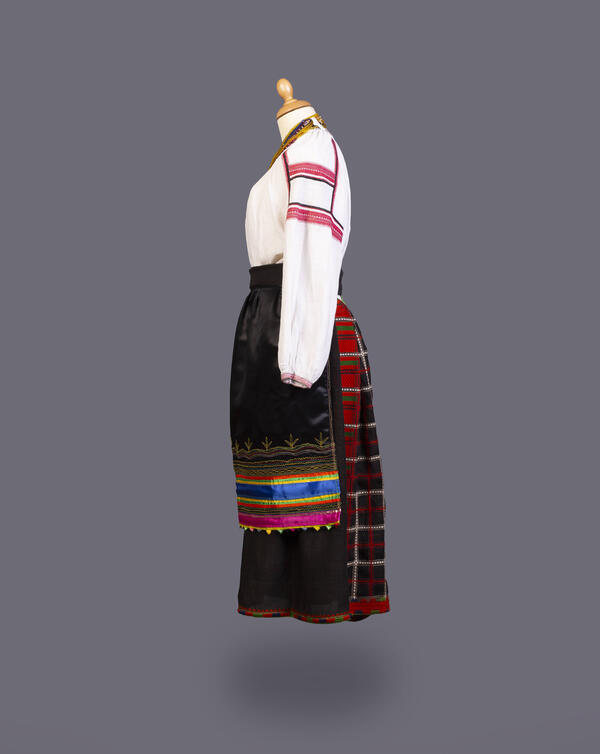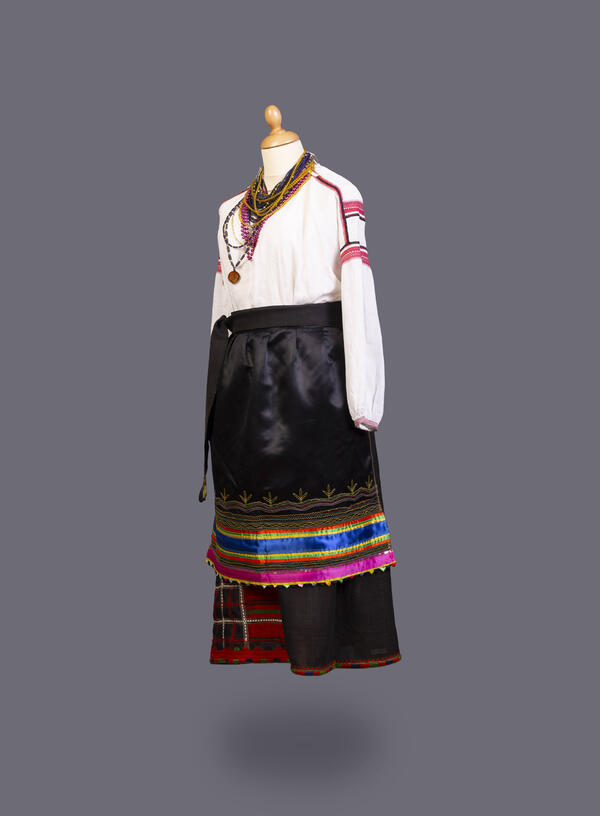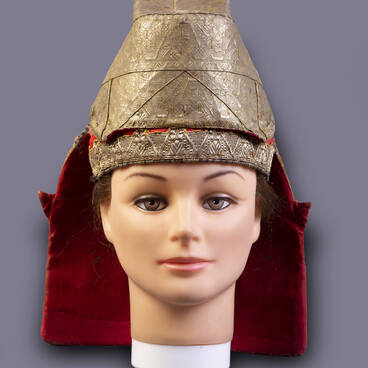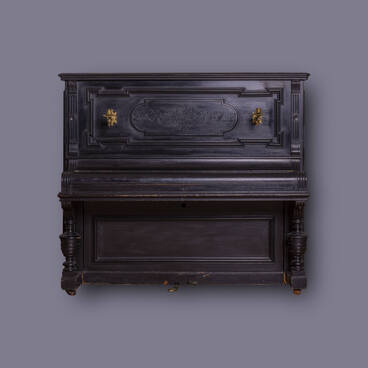A festive outfit for women from the village of Rogovatoe consisted of a homespun shirt decorated with embroidery and lace inserts, an apron, a belt, various neck ornaments, and a headdress. The costume belonged to Nina Dmitrievna Isakova (1939–2016), a songstress from Rogovatoe, head of the folklore ensemble “Bylina”, collector and composer of ditties.
The shirt that was common in the Rogovatoe village had rectangular poliki (a design element that connected the sleeves and back with the front) that were sewn along the weft (along the cross thread). Sleeves were sewn long with a square gusset made of the same canvas. The shirt was decorated with embroidery and lace inserts. The embroidery was dominated by red color, sometimes the embroidery was red and black.
Part of the costume was a poneva with eyelet edging, which has many variations. The exhibition shows a “golokletka” (bare checked) poneva. Only the seams and the hem border were embroidered on such a poneva. This name was given to the poneva because it is based on a checkered fabric, “not covered” with embroidery.
An apron was an indispensable accessory of this outfit; it was sewn from factory-made sateen cloth and decorated according to the function and the wearer’s age. The belt — “pokromka”, “podpoyaska” — was worn by both girls and women. The belt was woven from fine black wool with a diagonal interlacing. Such belt was 2.5 m long and 10–14 cm wide. The ends of the belt were completed with decorated blades.
In the 19th — early 20th centuries, headscarves were the most common headwear for women in the village Rogovatoe. They were worn by women at all times after they got married. The women wore several headscarves at once, putting them on so that all the headscarves were visible. After marriage, women had their hair parted in a straight parting, braiding it into two braids. The plaits were arranged on the head, secured with thin ribbons. On top they wore a headband — a small red chintz shawl, tied in a certain way. The headband was worn so that the forehead was covered with it, but the ears were left open and the ends of the kerchief were tied on the back, “spreading” the headwear wide. Over the headband a kerchief of white fine cotton fabric was worn. It was decorated with white or red lace in the main corner. The headscarf was worn over the kerchief. Girls and women wore beads and neck jewelry — necklaces — on the festive clothes.
The shirt that was common in the Rogovatoe village had rectangular poliki (a design element that connected the sleeves and back with the front) that were sewn along the weft (along the cross thread). Sleeves were sewn long with a square gusset made of the same canvas. The shirt was decorated with embroidery and lace inserts. The embroidery was dominated by red color, sometimes the embroidery was red and black.
Part of the costume was a poneva with eyelet edging, which has many variations. The exhibition shows a “golokletka” (bare checked) poneva. Only the seams and the hem border were embroidered on such a poneva. This name was given to the poneva because it is based on a checkered fabric, “not covered” with embroidery.
An apron was an indispensable accessory of this outfit; it was sewn from factory-made sateen cloth and decorated according to the function and the wearer’s age. The belt — “pokromka”, “podpoyaska” — was worn by both girls and women. The belt was woven from fine black wool with a diagonal interlacing. Such belt was 2.5 m long and 10–14 cm wide. The ends of the belt were completed with decorated blades.
In the 19th — early 20th centuries, headscarves were the most common headwear for women in the village Rogovatoe. They were worn by women at all times after they got married. The women wore several headscarves at once, putting them on so that all the headscarves were visible. After marriage, women had their hair parted in a straight parting, braiding it into two braids. The plaits were arranged on the head, secured with thin ribbons. On top they wore a headband — a small red chintz shawl, tied in a certain way. The headband was worn so that the forehead was covered with it, but the ears were left open and the ends of the kerchief were tied on the back, “spreading” the headwear wide. Over the headband a kerchief of white fine cotton fabric was worn. It was decorated with white or red lace in the main corner. The headscarf was worn over the kerchief. Girls and women wore beads and neck jewelry — necklaces — on the festive clothes.

